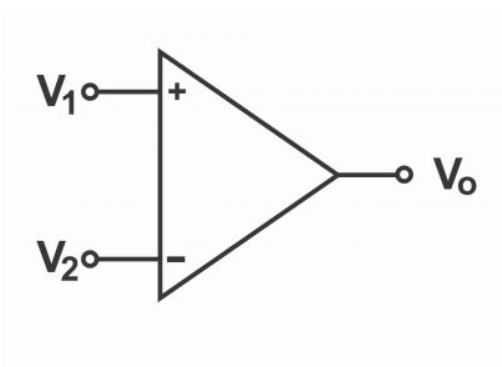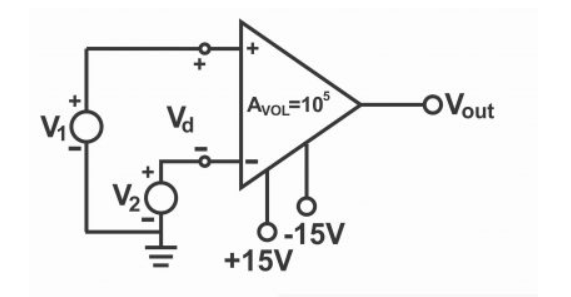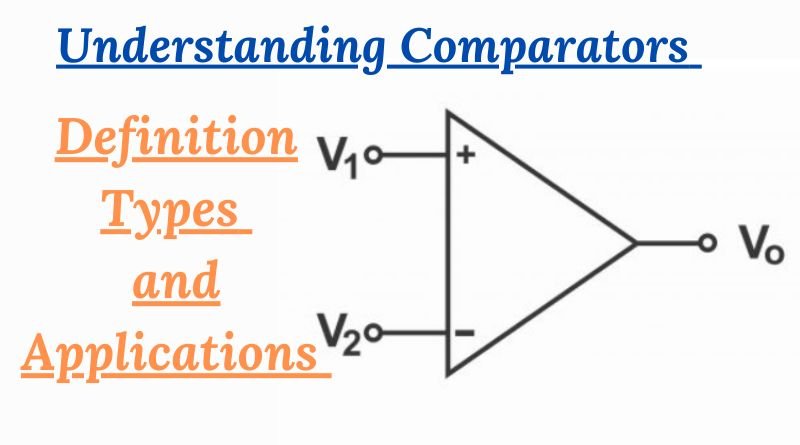Understanding Comparators: Definition, Types and Applications
A comparator is a fundamental electronic component widely used in analog circuits to compare two input voltages or currents and produce a digital output. In simple terms, a comparator determines which of the two input signals is higher and provides a corresponding binary output. If an operational amplifier is operated in an open-loop mode (without feedback), it functions as a voltage comparator. This versatile device plays an imp role in applications ranging from signal processing to decision-making systems in embedded technologies. Its ability to provide a binary output based on an input threshold makes it indispensable in modern electronics. This article explores the basics of comparators, their types and their working principles.
Definition of a Comparator

A comparator is an electronic device that compares two input signals, typically voltages, and outputs a signal indicating which input is higher. The output is usually a binary signal: either high (logic 1) or low (logic 0). Comparators are designed to operate in open-loop mode, providing rapid transitions between output states without feedback control. Their primary purpose is to enable decision-making in analog-to-digital conversion, signal threshold detection, and control systems.
Key Components of a Comparator Circuit
- Input Terminals: Two inputs—a non-inverting terminal (+) and an inverting terminal (−) receive the signals to be compared.
- Voltage Reference: A fixed reference voltage that one input is compared against.
- Output Stage: The comparator’s output stage generates a binary output (high or low) based on the comparison of the inputs.
- Power Supply: Provides the necessary operating voltage for the comparator.
Difference Between Comparators and Operational Amplifiers
While comparators and operational amplifiers (op-amps) share similar architectures, their functionalities differ significantly:
| Feature | Comparator | Operational Amplifier (Op-Amp) |
|---|---|---|
| Mode of Operation | Open-loop | Feedback (linear or non-linear) |
| Output | Digital (high/low) | Analog (continuous range) |
| Speed | High-speed switching | Relatively slower response |
| Applications | Threshold detection, decision-making | Amplification, filtering, and analog math |
| Slew Rate | Optimized for fast transitions | Limited for accuracy in analog applications |
Types of Comparators
Open-Loop Comparator
An open-loop comparator is the most basic type of comparator that operates without any feedback mechanism. It simply compares two input voltages and generates an output based on their relative magnitudes. These comparators are used in systems where rapid switching is required without precise control of the output.
Applications:
- Zero-crossing detectors.
- Voltage level detectors.
Window Comparator
A window comparator consists of two comparators working together to detect whether an input signal lies within a specific range or “window.” It has two reference voltages, one for the upper limit and another for the lower limit.
Applications:
- Battery monitoring systems to ensure voltage stays within safe limits.
- Signal conditioning circuits.
High-Speed Comparator
High-speed comparators are designed for applications that require rapid response times, such as digital communication systems and high-frequency circuits. These comparators often feature additional enhancements to reduce delay and improve accuracy.
Applications:
- Analog-to-digital converters (ADCs).
- High-speed clock and data recovery systems.
Working Principle of a Comparator
A comparator compares the voltages at its two input terminals and determines which is higher. When the voltage at the non-inverting terminal (+) exceeds the voltage at the inverting terminal (−), the output switches to a high state (logic 1). Conversely, when the inverting terminal voltage is higher, the output switches to a low state (logic 0). This rapid transition is achieved due to the high gain of the comparator.
Input-Output Behavior and Transfer Characteristics
The transfer characteristic of a comparator is a step function, where the output abruptly transitions between high and low states based on the input difference. The exact switching point is determined by the reference voltage and the input signals.
Circuit Diagram for Better Understanding

When an operational amplifier is applied without any feedback, it functions as a comparator. For example, if the inverting input is grounded, a minimal input voltage is required to saturate the output. This characteristic is explained by the equation:
Vd = Vsat / AVOL
Where:
- Vd is the differential voltage required for saturation.
- Vsat is the saturation voltage of the amplifier.
- AVOL is the open-loop gain of the amplifier.
For a typical operational amplifier like the 741C, with an open-loop gain of 10^5, and a supply voltage of ±13.5V, the minimum input voltage for saturation is approximately 135µV. The output switches to +13.5V when the non-inverting input exceeds the inverting input and to -13.5V otherwise.
Use of Voltage Reference and Its Significance
The voltage reference is crucial in determining the switching threshold of the comparator. By setting a fixed reference, the comparator can reliably decide when an input signal crosses a specific voltage level. This feature is essential in applications such as zero-crossing detection and voltage monitoring.
Applications of Comparators
Here are some common applications of comparators are as follows:
- Role in Analog-to-Digital Conversion: Comparators form the backbone of analog-to-digital converters (ADCs). In ADCs, comparators compare the input signal with a reference voltage to determine the digital representation of the analog signal. Successive approximation ADCs, for example, rely heavily on high-speed comparators.
- Use in Signal Processing and Threshold Detection: In signal processing, comparators detect whether a signal exceeds a specific threshold, enabling real-time decision-making. This is critical in audio systems, sensor circuits, and communication systems.
Examples of Real-World Applications
- Temperature Sensors: Comparators trigger alerts when temperature readings exceed predefined levels.
- Voltage Level Detection: Used in battery management systems to monitor overcharge or undercharge conditions.
- Pulse Generation: Generate timing signals in oscillators and waveform generators.
Advantages and Limitations
Advantages
- Simple and cost-effective.
- High-speed operation for rapid decision-making.
- Low power consumption in modern designs.
- Reliable performance in a wide range of applications.
Limitations
- Sensitive to noise, which may cause false triggering.
- Limited accuracy due to input offset voltages.
- Output may require buffering for compatibility with digital systems.
Conclusion
In conclusion, Comparators are versatile components that bridge the gap between analog and digital systems. Their ability to compare signals and provide binary outputs makes them essential in numerous applications, from signal processing to industrial automation. While they have certain limitations, advancements in design continue to expand their capabilities and efficiency. Understanding their principles and applications allows engineers to harness their potential effectively in modern electronics.
FAQs
What is the primary function of a comparator?
A comparator compares two input signals and outputs a binary signal indicating which input is higher.
How does a comparator differ from an operational amplifier?
Comparators operate in open-loop mode to provide rapid digital transitions, whereas operational amplifiers are typically used in closed-loop configurations for analog signal processing.
What are some common applications of comparators?
Comparators are used in analog-to-digital converters, voltage level detectors, temperature sensors, and signal threshold detection systems.
Why is a voltage reference important in a comparator circuit?
The voltage reference sets the threshold for comparison, enabling precise decision-making based on input signal levels.
What are the main advantages of using comparators?
Comparators are simple, cost-effective and capable of high-speed operation, making them ideal for a wide range of electronic applications.








